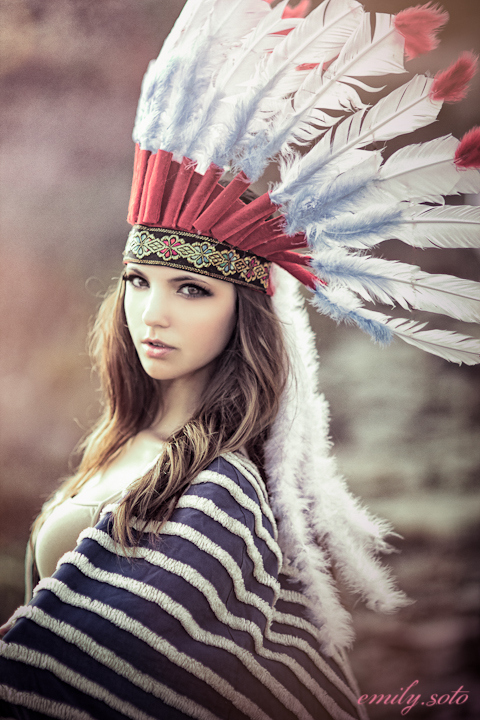Today is an Epic day for everyone and wish you wonderful day too [11-12-13]. For today’s photography article, learn few tips about Difference Types of Photography Lightings like Studio Vs Natural Source for your photography carrier.
Capturing the essence of your subject is essential for portrait photography. Your light source will make or break your portrait and set the mood for your final images. Understanding the difference between studio and natural lighting will help you to capture the perfect photos every time.
Difference Types of Photography Lightings like Studio Vs Natural Source are vital part of the photography.
Basic Action Photography Tips from our photography contributor
Difference Types of Photography Lightings like Studio Vs Natural Source
http://500px.com/photo/30720245
Natural Lighting
There are many benefits to using natural lighting in your portrait photography. Natural light tends to be somewhat harsher, but can also boost and accentuate colors. Natural sunlight can bring out the blue in the subject’s eyes, and allow the amber and yellow to sneak through the subject’s brown pupils. For men, natural lighting creates a more rugged and intense feel, highlighting the intricacies of complexion and facial expression. [xyz-ihs snippet=”468t”]
Natural lighting can be somewhat problematic for female subjects. The intensity of the light can create a sharpness that highlights areas around the mouth that are best camouflaged. The biggest challenge of natural lighting is its unevenness. It is difficult to control natural lighting, making it an unreliable source for lighting your portraits.
Strobe Lighting Vs. The Sun
http://500px.com/photo/21931893
Strobe lighting is a continuous light source, unlike the sun which is constantly in motion, casting shadows and creating uneven spots. In addition, the harshness of the sun’s light may cause your subject to squint or furrow their brow, changing the look of your photo. Strobes cast a softer light which can downplay problem wrinkles, brow furrows and fine lines. By using a strobe, you can do less touching up in post production and do more with your raw images.
Soft boxes and strobe lights widen the eyes, creating a more youthful look. Photographers that work with mature subjects often prefer studio lighting to create a softer appearance. Even though soft boxes work best for this purpose, you can still create softness with natural lighting. The best way to do this is to use reflectors. You can also bounce light off of a white wall and back onto the subject, diluting the harshness of the light.
Control over Lighting for Photography
http://500px.com/photo/8278544
One of the most common reasons that many photographers prefer studio lighting over natural lighting is that it is highly controllable. While natural light can do wonders for your portraiture, you are often at the mercy of the elements. An overcast day can make it a challenge to properly light your subjects, and an overly sunny day can cause your subjects to squint to protect their eyes, thus ruining your shot. So you learned about different types of photography lightings, now read more for other tips.
While soft boxes, reflectors and strobes can create ideal lighting conditions, many photographers still prefer using natural light, even shooting in the studio. Using natural light lends itself to spontaneity, an element that is difficult to duplicate with studio lights. If you happen to be out at a park and see children locked in an adorable embrace, it is easy to simply grab the camera and get the shot. It is for this reason that many photographers who specialize in children’s photography go for natural lighting.
Some places are simply difficult to access with your soft boxes, umbrellas, strobes and beauty dish. A set of abandoned railroad tracks, a mountain and a small alley may be more accessible without your equipment and lend themselves better to natural lighting. You are, however, limited by time with natural lighting. For many shoots, it’s a race against the sun to use the best lighting at the right time.
Getting the Best Shots in Any Lighting – How ?
The trouble with light meters, however, is that they are slightly more effective in studio lighting than in natural lighting. The light meter reads all white subjects, such as a white wall or a wedding gown a lot differently from an object that is all black, such as a car. The meter will find a balance and often give a setting that will produce a mid-grey tone. Understanding these limitations will help you to set your meter so that you get a more accurate representation of color in your portraits.
http://500px.com/photo/1761548
Welcome our new photography contributor: Viva Photography specialize in Wedding & Portrait Photography throughout Perth and Melbourne.
There are many benefits and drawbacks to both studio and natural lighting. Finding the right light source for your portrait photography will make all the difference in getting amazing shots every time.












Thanks for this share mate, nice read
Thank you. Welcome back Mars. Nice to see you here !
wow.. very nice sharing. very interesting. You share very important and nice points about photography..
Thank you for comment
Thank you for your nice and helpful post.
Thank you for the comment.
Thanks for sharing more tips of photography studio lighting and natural lighting, this will helpful post for readers who wants to know about photography studio lighting and natural lighting. Keep it up!